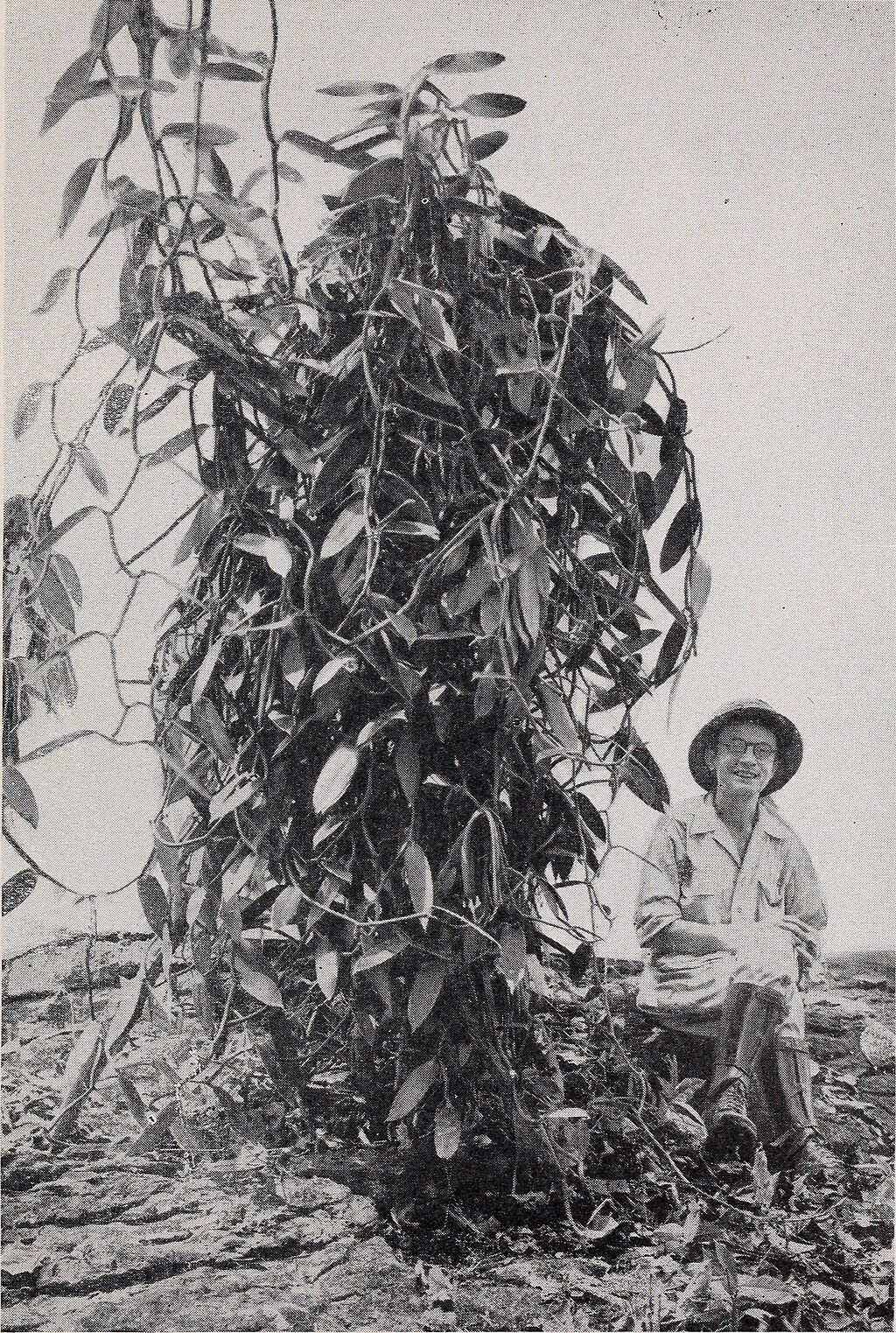By Jason Lopez
Aug 12 2023
Vanilla also has a long history in the Caribbean, especially in Puerto Rico, where it is featured in some of the most quintessential Puerto Rican delicacies and cocktails, such as soft and succulent flans and smooth and velvety coquitos. Although the history of vanilla cultivation in Puerto Rico was somewhat disrupted by the shift from agriculture to industry as well as the Great Migration of Puerto Ricans in the 1950s to the United States, and especially to New York City, a group of local Puerto Rican farmers formed the collective Vainilla Castañer LLC in 2018 in an effort, coined as the Vanilla Project, to revivify that legacy of Puerto Rican grown vanilla “so that Puerto Rico can smell like vanilla again” (Garafolo).
Several species of vanilla are indigenous to Puerto Rico, such as Vanilla barbellata and Vanilla pompona. Vanilla planifolia is said to have been introduced “from Mexico by relative of Miguell Morell of Utuado early in the 1900s” and then “in 1909 by the Federal Experiment Station in Puerto Rico from the United States Plant Introduction Gardens in Florida” (Childers & Cibes, 3).
In Guia de Campo, a field guide that documented the presence of several plant species, including vanilla, in and around the Inter American University of Puerto Rico’s San German campus, it is revealed that “in the 1930s agricultural leaders felt that Puerto Rico should be producing the bulk of the vanilla for the American market because of ideal climate and growing conditions” (Fitzmaurice, 76). Though it does not specify the identities of these agricultural leaders, it does coincide with the time frame during which the United States invested heavily on experimentation with the propagation and proliferation of Vanilla planifolia through the Federal Experiment Station in Puerto Rico in an effort to “supplement or partially replace coffee… [which had] not flourished in Puerto Rico because of competition, hurricane damage, improper care, and other factors” (Childers & Cibes, 1).
Interest was rising on obtaining other more convenient sources of vanilla to meet with the mounting demand for it in the United States, for “by the 1980s, Madagascar was producing 30% of the world’s supply” (Reel). The Puerto Rico Reconstruction Administration (PRRA) helped to industrialize and standardize the vanilla processing in Puerto Rico by creating a central processing plant in Castañer, Puerto Rico in the 1930s (Childers & Cibes, 3). By the 1950s, it was determined that Mexico was more equipped to meet the demands for vanilla in the United States, and that “vanilla production in Puerto Rico [could] hardly amount to more than a minor agricultural enterprise” (Childers & Cibes, 12). Ultimately, the shift from agriculture towards the industrialization of Puerto Rico and the destruction of vanilla crops due to root rot all but killed the vanilla industry in Puerto Rico: “by 1945 40-50% of plants were infected and growers were beginning to abandon the crop” (Bayman, 113).
It is out of that legacy of the vanilla farmers in Castañer that Vainilla Castañer has come forth in an effort to rekindle the vanilla industry in Puerto Rico today. The farming collective’s slogan is reclaiming history, which, when considering vanilla’s own history, can have many different interpretations. Vanilla is one of the most popular and expensive spices in the world, but there is an exploitative aspect to the history of the vanilla industry that sadly continues to be a problem to this day. It is not unlike the story of many plants and spices that found there way into Caribbean foodways through the violent age of conquistadors and the transatlantic slave trade. The industrialization of Puerto Rico in many ways nearly severed what had been Puerto Ricans’ connection to the land from an agricultural and perhaps even spiritual sense. So perhaps Vainilla Castañer’s slogan is not only about reclaiming the history of vanilla in Puerto Rico but reclaiming the history of the Puerto Rican connection to land through agriculture that is both ethical and symbiotic. Though the challenge may be great, the thought of making Puerto Rico smell like vanilla again, one of the most celebrated spices in Puerto Rican cuisine, fills one with wonder and sweet anticipation.
_CC0.thumb.jpg)




_CC0.jpg)
